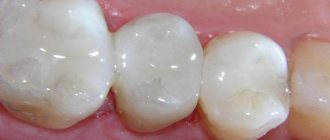The smell and taste of water – where is normal and where is pollution?
21.09.2017
The smell and taste of water – where is normal and where is pollution?
Chemically pure water is odorless and tasteless. Nevertheless, such water does not exist in nature; in any case, it will contain some elements in its composition. As the concentration of certain organic and inorganic substances increases, the water begins to acquire a certain taste and smell. In our article we will take a closer look at what standards drinking water that is safe for health must meet, as well as how to remove the unpleasant odor and taste of water.
From this article you will learn:
- What are the requirements for the smell and taste of water according to GOST?
- What does this or that smell of water mean?
- What does it mean that water has a salty or bitter taste?
- How to solve the problem of bad smell and taste of water
The main reasons for the appearance of bitterness in well water
Before entering the well, water passes through earthen rocks, in which there are many different biochemical elements and compounds that saturate it naturally. Due to these impurities, the composition of the water changes, resulting in water with a different taste, color, smell and consistency. This may subsequently have a detrimental effect on the health of all who use it.
Often, water that appears crystal clear in appearance can pose a great danger to the health of the person drinking it.
If you notice that the water in the well has changed its taste - it has become salty and bitter, know that you need to sound the alarm, because in this case the water has an excessive amount of foreign elements:
- Magnesium sulfate salts;
- Sodium chloride;
- Calcium salts;
- Potassium;
- Zinc;
- Other carbonates.
Due to excessive mineralization of the above elements, water becomes hard.
Most often, well water acquires a bitter taste due to the excess content of chlorides and sulfates (these are “hardness” salts). However, the number of harmful substances that change its taste, color and smell can be counted at least 50 thousand.
Of course, you're wondering what ways these trace minerals can get into your well water? There are the following ways of water pollution:
- Pollution by surface runoff;
- Spring floods;
- Natural pollution through the ground.
The chemical composition of well water is adversely affected by the following factors:
- Nearby agricultural enterprises;
- Neighboring industrial production;
- Landfills;
- Cesspools.
In some situations, it is enough to dig a deeper well, however, the water of deep wells can be oversaturated with microorganisms and contain pesticides. When the natural pressure of the aquifer decreases, basins of the so-called “depression” appear, which are filled with flowing surface water, garbage accumulates in them and accumulations of harmful impurities appear.
You should not lose sight of the fact that after a certain time, the bottom of the well may become silted, become contaminated with accumulated dirt, and when flooded, dangerous chemicals appear in the well and the corpses of small animals or rodents may enter. For these reasons, it is necessary to keep the well clean, which is achieved by regular cleaning and disinfection.
In any case, it is necessary to know information about the reasons that influence the appearance of bitterness in well water.
What does the smell and taste of water indicate?
Smell
Odor is an indicator of water quality, determined using an organoleptic method. The smell and taste of water changes under the influence of the composition of dissolved elements, temperature, pH values and a number of other factors. The intensity of the odor of water is determined experimentally at temperatures of +20 °C and +60 °C and assigned one or another score in accordance with the requirements.
Water odors are divided into two categories:
- natural origin
, which are formed under the influence of living and dead organisms in water, decaying plant debris, etc.; - artificial origin
, formed under the influence of impurities in industrial and agricultural waters.
Odors of the second category are named according to the substance that determines the odor - chlorine, gasoline, etc.
Character and designation of odors of water of the first group (natural origin):
| Symbol | Character of the smell |
| A | Fragrant |
| B | Bolotny |
| G D | Putrefactive Woody |
| Z | Earthy |
| P | moldy |
| R | Fish |
| WITH | Hydrogen sulfide |
| T | Grassy |
| N | Uncertain |
The intensity of the odor according to GOST 3351-74* is assessed on a six-point scale.
Odor intensity assessment | Odor intensity | The nature of the odor |
| 0 | No smell | No noticeable odor |
| I | Very weak | The smell is not noticed by the consumer, but is detected upon careful examination (when heating water) |
| II | Weak | The smell is detected by the consumer if he pays attention to it |
| III | Noticeable | The smell is easily detected; water is unpleasant to drink |
| IV | Distinct | The smell attracts attention and may make you refrain from drinking. |
| V | Very strong | The smell is very strong, this water is not suitable for drinking |
An unpleasant odor in the water usually indicates a problem with the pipeline or faucet. Often, the presence of an unpleasant odor does not mean that there are contaminants harmful to health in the water, but it does indicate that the water is not up to standard. In this case, it is necessary to conduct additional research in order to restore its optimal condition. As water travels from the treatment plant to your tap, it is exposed to harmful substances at various stages of the process. Sometimes the water may have a metallic taste or smell of chlorine.
- Sulfur smell.
Water that has a strong sulfur odor (rotten egg smell) most likely contains sulfur or hydrogen sulfide bacteria. This smell does not always indicate danger, but this fact, as a rule, indicates a high level of environmental pollution or the presence of chemical elements. Sulfur bacteria live in environments with little oxygen, such as deep wells or plumbing systems, and eat decaying organic matter, producing hydrogen sulfide gas that becomes trapped in water sources.
When the source of sulfur bacteria is localized in the water source, a ventilation system should be established so that the gas has an outlet. Sulfur bacteria live in groundwater and are completely harmless to human health. The smell of hydrogen sulfide is very strong; it can be easily detected even at very low concentrations in water.
If you only notice a strange odor from the water when you use a hot tap, then the reason for it may lie in the chemical reaction that occurs during the process of heating the water. If the odor of the water decreases or disappears when you turn on both taps or increase the water pressure, or the intensity of the odor changes over time, then there is likely sulfur bacteria in the well or water distribution system.
This fact may also indicate the presence of a dangerous problem in the water supply system. Hydrogen sulfide in the water supply system can cause damage to pipes, since this substance can corrode various types of metal.
- Sewage smell.
Water may smell like sewage if it contains bacteria from food, soap, or other materials that enter the sewer system. For this reason, heavy gas may accumulate near the sink drain. So, when you turn on the water, gas rises into the air space near the sink, which may cause you to think that the water is giving off that unpleasant odor.
Sometimes an unpleasant odor occurs when you use hot water, then most likely the cause is bacteria living in the hot water heater. If you use water from a well, then hydrogen sulfide may form there. In this case, it is recommended to contact a laboratory to study the composition of the water.
Hydrogen sulfide is typically caused by bacteria forming in a hot water heater when it is operated at low temperatures or turned off for long periods of time. To determine whether the source of the unpleasant odor is the water or the pipes, pour water into a glass and step away from the tap to smell it. If the water does not give off an unpleasant odor, then the problem lies in the drain or pipes.
Pure natural water has no odor or taste.
Read material on the topic: Methods of water purification - from complex systems to simple methods
Taste of water
The taste of water depends on the organic and inorganic substances dissolved in it and differs in character and intensity. The taste of water can be:
- salty;
- sour;
- sweet;
- bitter.
Other taste sensations are called water flavors, which can be alkaline, metallic, astringent, etc.
According to its qualitative characteristics, the taste of water can be chlorine, fishy, bitter, etc. The most common taste of water is salty, usually caused by sodium chloride dissolved in water. In turn, the bitter taste of water can arise due to the presence of magnesium sulfate in it, and the sour taste is formed under the influence of excess free carbon dioxide, etc.
The intensity of taste and aftertaste of water is determined at +20 °C and is assessed on a five-point scale, in accordance with the requirements of the table below:
| Intensity of taste and aftertaste | The nature of the appearance of taste and aftertaste | Intensity rating, point |
| No | Taste and aftertaste are not felt | 0 |
| Very weak | Taste and aftertaste are not perceived by the consumer, but are detected during laboratory testing. | 1 |
| Weak | Taste and aftertaste are noticed by the consumer if they pay attention to it | 2 |
| Noticeable | Taste and aftertaste are easily noticed and cause disapproval of the water | 3 |
| Distinct | Taste and aftertaste attract attention and make you refrain from drinking | 4 |
| Very strong | The taste and aftertaste are so strong that they make the water unfit for consumption. | 5 |
As we said earlier, the smell and taste of water indicate the presence of some kind of problem.
- Salty taste.
Water that tastes salty usually contains chloride ions or sulfates, or both. Quite often, high chloride levels are caused by industrial waste or land reclamation. Residents of coastal areas face this problem when seawater enters the local water supply. Magnesium and sodium sulfate can also cause a saline taste in the water.
These sulfates form naturally in certain types of soil and rock. For example, sulfates enter the water supply through groundwater or rainwater moving along the ground. In addition, a high concentration of sulfates (>500 mg per liter) in the liquid negatively affects the human body, causing a laxative effect. Despite the fact that such water does not pose a great health hazard, a study of the composition of the water should be carried out, since these substances can cause damage to pipes in apartment buildings or office premises.
- Sweet taste.
A sweet taste in water may indicate a high content of natural minerals (for example, calcium or iron), or an imbalance in the acid-base balance of the water. In the case where the problem is not caused by minerals, the cause is in the plumbing. Pipes can contribute to a salty or sweet taste in water, no matter how old the building is. Also, the taste of the water may change due to sanitation work, so you can eliminate the sweet smell and taste of the water by flushing.
- Earthy or musty smell and taste of water.
Water passing through peat may have an earthy, musty taste and odor. Water treatment systems work to eliminate organic materials that cause this taste.
There are several types of bacteria and algae that live in bodies of water that can produce substances that are not harmful to health, but can cause musty, earthy odors and tastes in the water. Such organisms are also capable of growing on the inner wall of water pipes in apartment buildings.
- Rubber or plastic.
Water may have an unpleasant odor or taste due to contact with certain plumbing materials. For example, water coming into contact with plastic or rubber elements can become filled with a small amount of these substances. The same can happen upon contact with rubber and plastic hoses that serve to connect the pipes of the water supply system to the mixer.
- Bitter.
Copper, iron, or galvanized pipes can also cause your water to taste metallic or taste bitter. Quite quickly, pipes become clogged with substances such as rust, bacteria and other deposits.
- Gasoline or oil.
If you notice when using tap water that it begins to give off a gasoline or oily smell, as well as a taste, then under no circumstances should it be used for drinking, as this can have a very negative impact on human health. It is likely that there is an oil or oil leak nearby.
Read material on the topic: White sediment in water
Why is water with excess iron harmful?
The normal level of iron content in well water is 0.3 mg/liter. If the iron content in water is higher than normal, it becomes dark, cloudy and begins to taste bitter. However, the presence of an excess of iron is detected only during its oxidation - when water comes into contact with air - the color of the water gradually begins to acquire an orange tint.
Alkaline earth metals get into well water because they are washed out of gypsum and chalk soils. The softest water is obtained from underground aquifers that run through granite soil rocks.
The danger of using drinking water with an excess of iron.
If, in addition to iron, nitrites, nitrates and ammonia, organic and mechanical impurities (residues of fertilizers and synthetic detergents) are detected in well water, it becomes clear that the water has been polluted by wastewater from household pipeline systems.
If you choose the wrong material for equipping a well, the water at the source may turn out to be bitter. In this case, the taste of the water is not affected by the depth of the well and the number of aquifers passed through. If a well frame is built from aspen, this tree can give the water a putrid smell and a bitter taste. Therefore, when deciding to build a wooden well, choose the wood carefully. If you do not understand the characteristics of tree species, consult with specialists so as not to risk your health.
Why is water that has a bitter taste dangerous?
From the above, you can understand why well water acquires a bitter taste. However, you should know that bad-tasting tea, or the tart taste of soup made from spring water, is not the only and biggest problem. Even visually crystal clear water with a bitter taste is dangerous to health.
Listed above are compounds that, in certain quantities, are beneficial to the human body, are widely used in medicine, and are used to prepare drinks. However, if they are contained in water in high concentrations, imparting bitterness to it, this can seriously threaten health.
If you drink bitter well water, it can have detrimental effects on your body:
- Kidney stones appear.
- Indigestion often occurs and the functioning of the gastrointestinal tract is disrupted.
- Heart diseases develop or worsen.
- Nails become brittle and brittle.
- Hair becomes dull and split.
If you wash and wash with such water, peeling and itching of the skin will begin, as soap slag is formed, destroying the fat barrier of the skin.
Bitter water in a well: health consequences
Any sane person, feeling that the water in his well is bitter, will rush to find out the cause and possible consequences. And also ways to solve the problem. How can water that tastes bitter affect your health? Depending on what substances make the water bitter, it can cause:
- deterioration of nails and hair
- skin irritation
- digestive disorders
- stones in the kidneys
- exacerbation of cardiovascular diseases
Also, water with an excess of hardness salts does not have the best effect on the operation of household appliances.
Problems with equipment and household inconveniences
The use of bitter well water for domestic purposes is also fraught with unpleasant consequences. The bitterness of water indicates its hardness. Hard water shortens the life of heating appliances and plumbing fixtures. The walls of radiators, electric kettles and other equipment become covered with sediment - a dense crust of salts forms on them, which interferes with the normal functioning of the devices and causes them to fail prematurely.
Another dangerous effect of sulfates in water is the appearance of a noticeable film on the surfaces of tea, coffee and soup. Water containing harmful impurities in excess spoils the taste of food and dishes; it boils slowly, which makes cooking longer.
White stains on the stove, faucet, car after washing are all deposits of sulfates and carbonates on the surface.
Many people are mistaken and believe that the cause of whitish streaks and drops on any surface in contact with water, and poorly washed clothes, is the use of soap. But this is a result of high water hardness.
Identifying the causes of bitter well water
If you notice that your well water tastes bitter, you should immediately submit samples to a laboratory for analysis, where specialists will determine its composition. Employees of the relevant authorities, after analyzing the water, will tell you if there are deviations from the standards of physical, chemical and bacteriological indicators:
- Color and haze.
- Foaminess.
- Hardness (norm 0.7 mg/liter).
- Alkalinity (normal 7-7.5 mmol/liter).
- Content of minerals and ions (no more than 1000 mg/liter).
- The presence or absence of dangerous microorganisms.
- Content of toxins and radioactive elements.
- And other tests.
It is recommended that well water be analyzed only in an accredited laboratory.
It is strictly prohibited to drink water from a well unless it has been subjected to a detailed professional analysis of its chemical composition and organoleptic properties, since this is very dangerous to health. Without conducting epidemic, radiation and other studies, well water can be used exclusively for technical purposes.
To which authorities should well water be submitted for analysis?
You can only obtain a guarantee of high-quality testing of well water, as well as an accurate conclusion about the reasons for its bitterness, in an accredited independent laboratory that has all the necessary approvals, certifications and licenses. After conducting detailed analyses, chemists issue official certificates and protocols on the suitability of the well for drinking or using water for household purposes.
You can also contact the centers for hygiene and epidemiology, the laboratory of the regional branch of Vodokanal, or an organization that specializes in geological exploration and solves problems of water purification.
Gallbladder and liver diseases
If the taste of bitterness in your mouth has become your constant companion, then the first thing to rule out is stagnation of bile, which occurs due to pathologies of the gallbladder and liver. Bile is produced in the liver, then it enters the gallbladder, where it is stored until food enters the stomach. This beneficial liquid helps the stomach digest food. As soon as you eat, bile enters the duodenum - this is a natural phenomenon. With pathologies of the gallbladder and liver, the fluid does not come out completely or stagnates, a lot of it is formed, and a bitter taste appears in the mouth.
In case of pathologies, our internal organs try to get rid of bile and can even arrange an “emergency discharge” of it, causing some of the liquid to enter the esophagus and even the oral cavity.
In case of liver disease, it can cause bitterness
What does bitterness in the mouth mean? The phenomenon may indicate the development of cholelithiasis, cholecystitis, hepatitis, cirrhosis, cancer, dyskinesia (impaired motility of the gallbladder). Unpleasant sensations in the mouth appear most often in the morning, as soon as you wake up, and also after playing sports. They may be accompanied by tingling and discomfort in the right hypochondrium, belching, dry mucous membranes, and indigestion. The bitter taste may alternate with a metallic or “iron” taste.
Proper preparation of water for analysis
To obtain the arithmetic average value (the water in the well is stratified in the vertical plane), sampling well water is carried out according to the following principle. Water is collected from 10-15 buckets into a large container, mixed, and water is taken from it for analysis.
Chemical analysis of drinking water from a well.
It is necessary to ensure the cleanliness and tightness of the container used to collect water for analysis. Before collecting water for analysis, it is necessary to thoroughly rinse the bottle, the minimum volume of which should be one and a half liters, but without using any reagents.
It is not recommended to use bottles that have contained sweet, salty or carbonated liquids as this will make the results inaccurate.
A sample of well water is poured into the bottle in a thin stream all the way to the top so that no air remains in the container. If using a plastic container, you can squeeze out the air before sealing it.
Delivery of well water to the laboratory should be no later than within 4 hours after its collection.
Boiling and freezing well water
Boiling. It is the simplest and most accessible, as well as the least expensive way to remove hardness salts from water. When water boils, sulfates and chlorides settle on the walls and bottom of the vessel. However, it must be borne in mind that boiling hard water can prematurely damage the container, so boiling is contraindicated in heating boilers. It is a temporary solution.
Freezing. Purification by crystallization. It is necessary to place a vessel with bitter well water in the freezer. When it freezes, crystals of pure ice will begin to grow on the walls of the container, displacing the salts into the central area of the container. After a certain period of time (this is influenced by the degree of contamination of the liquid and the working volume), clean frozen water collects on the walls of the container, and the salt accumulations remain liquid in the center of the container, since their freezing rate is lower. They just merge.
Methods for removing bitterness from water
So, well water with excessive hardness has an unpleasant bitter taste. Long-term use of such water is not advisable for reasons of health loss. To eliminate cloying bitterness, water with a high degree of hardness should be subjected to a softening process.
Filters are mainly of the ion exchange type, which are capable of drawing out calcium and magnesium salts, releasing sodium compounds. The method helps to significantly soften water.
Reverse osmosis filters, known for their high-quality cleaning, are also considered effective softeners with a significant reduction in the presence of suspended matter.
A traditional and easily accessible softening option is boiling. In this case, lime “sits” on the walls and bottom of the vessel (kettle) in the form of sediment. The method is not suitable for volumetric heating boilers.
When choosing a filtration system, you should definitely take into account: acidity, alkalinity, water temperature, free oxygen content and other data. The indicators need to be linked to the correct selection of the filter system and its focus on cleaning the corresponding type of pollution.
Filtration of well water
Thanks to the use of filters, you can make well water softer and eliminate the unpleasant taste. The following types of filtration systems exist:
Ion exchange. The most common use of filters is that they operate on an ion exchange resin. They adsorb magnesium and calcium salts, and the water is saturated with sodium compounds. The filters consist of a cylinder and a tank with tableted salt. An ion exchange resin is generated in the tank.
Reverse osmosis filter. Bitter water is supplied under strong pressure and passes through a filter membrane, which traps harmful impurities.
Carbon filter - these filters work using activated carbon as an active substance, which is capable of absorbing mechanical impurities and salts found in water.
Iron remover (manual or automatic). The principle of their operation is based on a backfill that catalyzes oxidation reactions, or on the principle of electrolysis. Oxidation occurs of iron and manganese contained in the water that passes through the iron remover. Harmful substances precipitate, the water becomes not bitter, but pleasant to the taste.
UV system. Such devices destroy harmful microflora and microfauna in water through a photochemical reaction. Such systems are used in combination with other types of filters and are the final stage of well water purification.
To correctly select an effective method for purifying well water with a bitter taste, the results of a laboratory analysis of the composition of the water are required. Therefore, the solution to this issue is individual. In this case, the seasonality and purpose of using the well, the types and extent of water pollution in it must be taken into account.
To ensure a safe water supply, the minimum requirement is to install an iron remover and a softener (ion filter).
If, after cleaning well water, its hardness has decreased to less than 0.2 mg/liter, corrosion may occur in metal pipes, so cleaning must be carried out competently and carefully.
It is good if the filtration system consists of several filters responsible for coarse, fine and disinfecting cleaning. Only with a comprehensive professional approach can you remove bitterness from well water and eliminate other risks that may arise when using it.
Bitter water after reverse osmosis
Have you heard that after purifying water using reverse osmosis, distilled water is obtained?
Although not quite distilled, it is very similar to it. What do you know about distilled water? The pH of such water is usually around 6 due to dissolved carbon dioxide. If it stands in the air, it will gradually level out to a neutral seven. There are practically no salts, only bare water molecules.
Reference books state that distilled water has no taste . How long ago have you tasted it? You will be surprised, but it is bitter .
The conclusion suggests itself: either accept it or abandon reverse osmosis? Or keep purified water in an open jug for at least a couple of hours before drinking it raw. This is enough to normalize the taste.
Yes, there are also mineralizers. They raise the pH by adding calcium salts. They can also be used, but the taste will improve only in the first portions of water, within one mug.
Measures to prevent bitterness in well water
The water of each aquifer has its own composition and taste. For this reason, an assessment of these parameters should be carried out while digging the well. If workers find water that does not meet the required quality, they must continue to deepen the well until the next level appears, continuing to look for an underground pool whose water will have satisfactory characteristics.
Do not forget that the taste of well water is influenced by the materials that were used to build the well, so it is better to entrust this work to professionals.
However, the bitterness of the water in the well may not appear immediately. There are reasons for this, which you have read above. But the main measure is keeping the well itself clean. To do this, it is necessary to carry out timely prevention:
- Conducting regular laboratory analysis.
- Once or twice a year you need to pump water from the well, clean the walls and its bottom.
- Do not neglect routine disinfection.
- Make sure that the house sewage system is always in good working order - this prevents contamination of the well.
- It is necessary to cover the well with a lid at all times.
Do not solve the problems we have described on your own. It is better to contact specialists in a timely manner, starting from the well construction stage. Thanks to this, you will have good quality water, and if it changes its taste or color, it is easy to determine the reason for its change, and then eliminate the problems quickly and effectively.
Causes of bitter taste not associated with serious illnesses
- consumption of low-quality and stale food: a bitter taste in the mouth often appears due to the consumption of expired or specific food products. For example, pine nuts are rich in healthy fats, but if they are stored for too long, the fats in them begin to oxidize and become bitter.
- overeating at night: especially if the food was fatty and “heavy”. A similar phenomenon is also caused by products that provoke increased gas formation in the intestines (cabbage, beans, baked goods),
- love for carbonated drinks: champagne, mineral water with gas,
- drinking alcohol,
- decreased activity of taste buds: this problem is most often encountered by older people, whose hormonal levels change with age and some receptors become insensitive. A problem also arises for people who smoke, because... with constant exposure to smoke on the mucous membrane, dystrophy of the taste buds occurs,
- taking medications and herbal decoctions: choleretic, as well as antifungal and antihistamines can have this effect,
- pregnancy: the taste of bitterness in the mouth and the reasons for its appearance in women are often associated precisely with bearing a child. The symptom is typical for the second half of pregnancy, since it is during this period that the growing and developing child begins to put pressure on the internal organs and displace them, which increases the likelihood of bile reflux into the esophagus,
- hormonal changes in the body: for example, in women at the onset of menopause,
- a lack or excess of vitamins in the body: for example, a lack of zinc or an excess of B12 contributes to the appearance of a bitter taste.
Pregnancy often causes nausea and bitterness in the mouth








